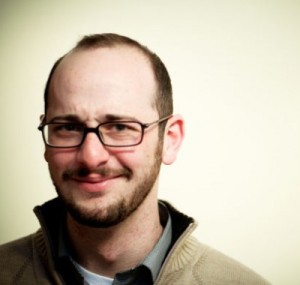Originally published in the Brandeis University Justice
March 13, 2012

The power of words.
Hoots, stomps and applause fill the air, causing the poet to smirk slightly before continuing with his piece. He fills the room with his words, emotion-drenched and powerful. His volume dips from barely above a whisper to a booming echo.
This is Brandeis Open Mic’s most recent slam, Brandeis vs. Berklee vs. Harvard. The event took place on Tuesday night in the Shapiro Student Center Multipurpose Room. Teams of four poets from each university showed off their slam writing and performance skills, competing in four rounds. It was the Brandeis team, VOCAL, that claimed the top spot, beating out Berklee by just six-tenths of a point. Though the competition was fierce, the poets were immensely appreciative of each other, cheering loudly when a verse hit home regardless of which team the speaker was on.
Before the slam began, Brandeis team member Rawda Aljawhary ’13 led a brief workshop for performers and audience members. She asked participants to imagine a moment that they wished to write about and to examine it “from every possible angle,” so that they could find a more creative way to incorporate the memory into a poem. Aljawhary said that she uses this technique herself when writing. After several minutes, many poets shared the short pieces or snippets of verse they had come up with.
As the workshop ended, more and more audience members filed into the space, until the Multipurpose Room held close to 50 people. Audience members and competitors were invited to perform at the open mic that drew in the audience before the official competition. This is when the atmosphere of the slam poetry competition really began to wash over the room.
The poems performed at the open mic, as well as those performed in the actual competition, covered a whole range of topics, from the irreverent—afternoon sexual escapades, poetry itself—to the disturbing—domestic violence and racism. No matter the subject, however, the audience always had something to say. Although I’ve watched plenty of slam poetry online or as part of a larger performance, I wasn’t prepared for the audience response.
Grunts of approval, foot stomping, cries of “aww, yeah” and “go, poet” provided a backdrop to the poem itself, connecting the audience to the performer in a way I had never experienced before. I even heard a girl shout, “That was so motherfucking good” after one poem left the crowd almost speechless. Cheers of approval quickly followed.
After the open mic, three judges were chosen from the audience. Attempts were made to find unbiased viewers, though it was difficult considering nearly all of the audience members were from Brandeis. The host of the slam and former VOCAL captain, Brandeis alumnus Jason Henry Simon-Bierenbaum ’11 explained the slam rules, which are standard for all competitions, both on the collegiate and professional levels. Judges give a score from zero to 10 based on how well the poet did, both in writing and performing their work. There are four rounds, during which one poet from each school performs, for a total of 12 performances. Each poet is given no more than three minutes for each poem. No props, costumes or music can be used, though dance, body movement and beat boxing are allowed.
As an introduction to the official competition, Brandeis poet Kat Flaherty ’15, the “sacrificial poet” of the night, performed her poem, “Breasts” about when she had thought she might have breast cancer, to give the judges an example on which to base their scores. Then the poets got down to business.
Poets Jessica Hood ’15, Malika Imhotep ’15, Emily Duggan ’15, and Usman Hameedi ’12 were the four Brandeis poets. In the first round, Hood gave a personal account of her relationship with food, considering what she termed her “inheritance”: the diabetes that plagues many members of her family. Hood’s descriptions of Southern home cooking were mouth-watering, but quickly turned sour when the audience realized that these foods were poison to a diabetic.
Imhotep had a different style than Hood, speaking faster and pronouncing her words less clearly for effect, more akin to a rap than a poem. She spoke about how black men had to change the way they acted to fit into broader society, acting tough and disrespectfully to impress their peers and to make an impression. Imhotep is a small person, standing only a few inches over five feet. Her voice, however, was loud and sure, expressing the anger she clearly felt. Imhotep performed wearing a tight beanie over her head, as though to contain the thoughts that instead exploded from her mouth.
Duggan, who opened the third round of poetry, also had a style uniquely her own. She did not employ the traditional slam techniques of spacing her words to give emphasis to certain phrases. She did not alter her tempo or volume to highlight different verses. Instead, she performed her poem about death and separation much more like a traditional poetry reading, showcasing the many stylistic variations poets use when performing their work.
These changing techniques are what makes slam poetry a great art form, according to slam poet and author of Words In Your Face: A Guided Tour Through Twenty Years of the New York City Poetry Slam, Cristin O’Keefe Aptowicz. In an interview with the Best American Poet blog, Aptowicz commented, “Poets … always worry that something—a style, a project, a poet—will become so dominant that it will kill the scene, but it never does. Ranting hipsters, freestyle rappers, bohemian drifters, proto-comedians, mystical shamans and gothy punks have all had their time at the top of the slam food chain, but in the end, something different always comes along and challenges the poets to try something new.”
Aptowicz’ words were proven true at the Brandeis vs. Berklee vs. Harvard event. Hameedi, the VOCAL captain and the last Brandeis performer, is known on campus for his mastery of fast-paced word-play and his politically charged pieces, and Tuesday night’s poem was no exception. Hameedi performed “To Every TSA Agent That Gets A Little Antsy When Someone Obviously Muslim Tries to Board an Airplane,” a poem in which he lambasted Transportation Security Administration agents, the American government and regular citizens for discriminating against Muslims and people presumed to be of Middle Eastern descent. Hameedi referred to himself as a “proud Pakistani-American.” The poem itself went through all 26 letters of the alphabet, making 26 alliterative verses before Hameedi wrapped it all up with righteous indignation.
As Brandeis claimed victory at the end of the evening, the audience buzzed with energy as they left the room. The cadences of slam poems echoed in my mind for the rest of the night.



















